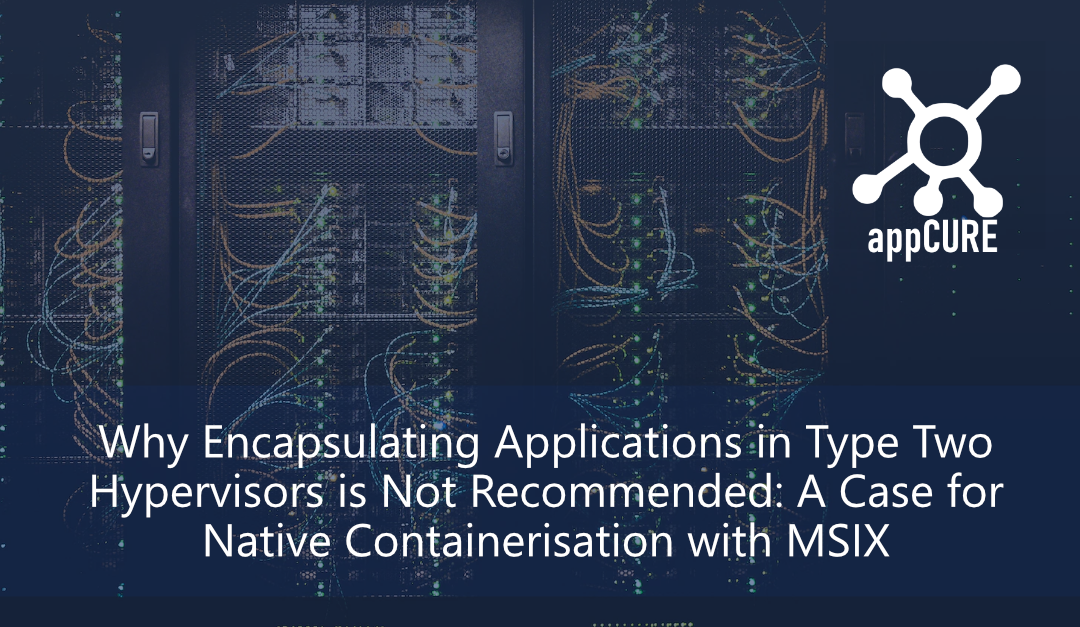
Why Encapsulating Applications in Type Two Hypervisors is Not Recommended: A Case for Native Containerization with MSIX
With the growing popularity of cloud computing, virtualization has become an indispensable tool for organizations looking to maximize the utilization of their IT infrastructure. However, not all virtualization technologies are created equal. When it comes to application virtualization, organizations have two main options: type two hypervisors and native containerization. While type two hypervisors have been widely used in the past, they are now facing significant challenges and limitations, making them a less attractive option compared to native containerization.
A type two hypervisor, also known as a hosted hypervisor, is installed on a host operating system, and runs virtual machines (VMs) on top of it. On the other hand, native containerization is a modern virtualization technique that runs applications in isolated containers, sharing the host operating system and resources.
One of the main problems with type two hypervisors is their performance overhead. VMs run in a virtual environment, requiring hardware virtualization to be enabled in the host operating system. This introduces additional overhead, slowing down the performance of the applications running in the VMs. This can be particularly problematic for resource-intensive applications, such as those used in scientific or engineering simulations, or data-intensive applications, such as big data analytics.
Another issue with type two hypervisors is security. VMs are isolated from the host operating system, but they still share the same underlying hardware and firmware, making them vulnerable to security exploits and malware. In addition, VMs can potentially interact with each other, creating a risk of cross-VM attacks. Furthermore, type two hypervisors have been shown to have vulnerabilities in the past, and patching them can be a time-consuming and complex process.
In contrast, native containerization provides a much more secure and efficient virtualization environment. Applications are isolated in their own containers, with no direct interaction between them. This eliminates the risk of cross-application attacks and reduces the attack surface, making it much harder for malicious actors to exploit security vulnerabilities. Additionally, native containerization has a much smaller performance overhead compared to type two hypervisors, making it a better choice for resource-intensive applications.
One of the most promising native containerization technologies is MSIX, a modern, flexible and efficient virtualization technology from Microsoft. MSIX provides a consistent application environment, regardless of the underlying hardware or operating system. This enables organizations to deploy applications faster and with more confidence, knowing that they will work seamlessly on any device. MSIX also provides a number of security and management features, such as integration with Windows Defender, which makes it easier for organizations to protect their applications and data.
In conclusion, type two hypervisors are becoming increasingly obsolete, as organizations face growing challenges in terms of performance and security. Native containerization provides a more efficient and secure virtualization environment, and MSIX is one of the most promising technologies in this space. By using MSIX, organizations can benefit from a consistent application environment, faster deployment, and enhanced security, making it the preferred choice for application virtualization.
